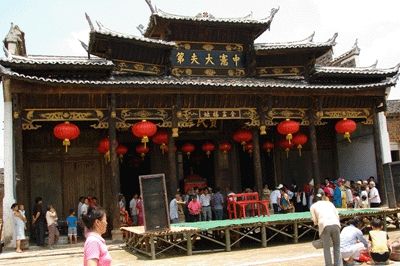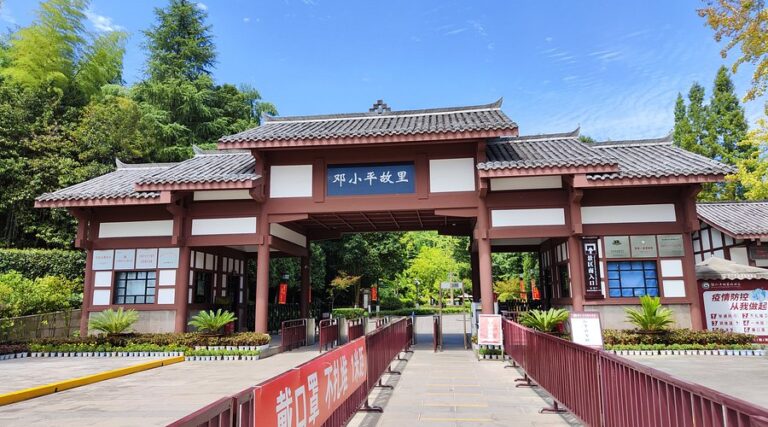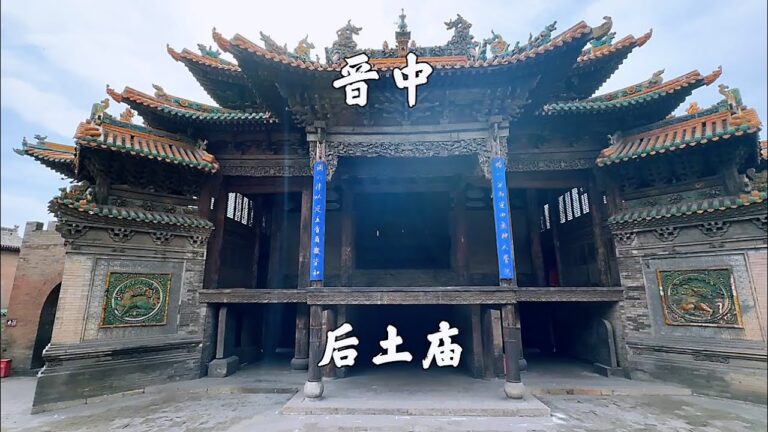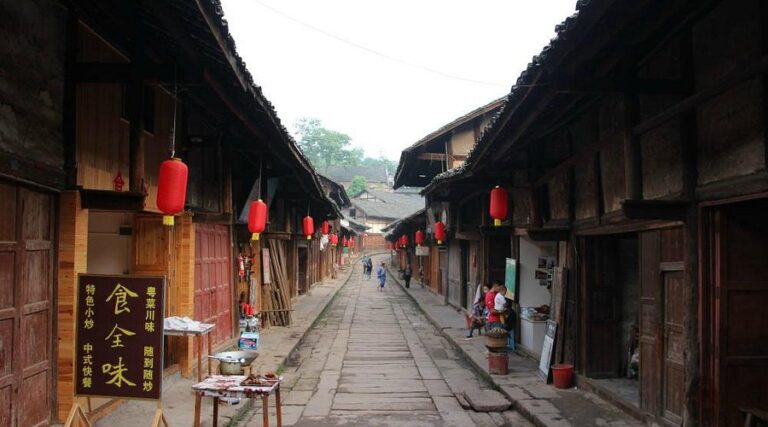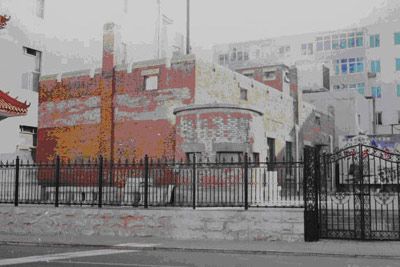Wuyishan Yamuqun: Your Ultimate Adventure Awaits in Nanping, Fujian
An Essential Guide to Visiting Nanping Wuyishan Yamuqun
In This Guide
- An Essential Guide to Visiting Nanping Wuyishan Yamuqun
- The Rich History of Nanping Wuyishan Yamuqun
- Main Highlights: What to See at Nanping Wuyishan Yamuqun
- Planning Your Visit: A Practical Guide
- Tickets, Hours, and Booking
- How to Get There
- Local Cuisine and Accommodation
- Frequently Asked Questions
- Final Thoughts on Your Trip
Nestled within the breathtaking landscapes of Wuyishan National Scenic Area in Fujian Province, the Nanping Wuyishan Yamuqun, or Wuyishan Cliff Tombs, presents a captivating glimpse into ancient burial practices of the Min people. This remarkable site, dating back to the late Xia Dynasty, consists of nearly twenty distinct locations scattered across the rugged cliffs overlooking the meandering Jiuqu Stream. Each of these sites houses intricately crafted wooden coffins shaped like traditional Jiangnan boats, known as “boat coffins,” which reflect the region’s rich cultural heritage and spiritual beliefs associated with the afterlife.
These extraordinary tombs, often perched precariously on cliff ledges or tucked away in natural caves, have intrigued archaeologists and historians alike. The burial method—suspended high above the ground—adds an air of mystique, making these sites appear almost ethereal. With grave goods such as bamboo artifacts, ceramics, and bronze items hinting at the social structure and customs of their time, the Wuyishan Cliff Tombs not only serve as a testament to the craftsmanship of ancient artisans but also as a portal into the spiritual world of the past.
Since the 1980s, extensive archaeological efforts have unearthed over 200 cliff tombs in the region, revealing a treasure trove of artifacts from the Spring and Autumn period, some 2,600 years ago. Recognized as a National Key Cultural Heritage Site in 2006, these tombs embody the historical significance and enigmatic allure of one of China’s earliest known burial cultures. For travelers and history enthusiasts, visiting the Wuyishan Cliff Tombs offers an unparalleled opportunity to connect with the ancient past amidst one of China’s most stunning natural landscapes.
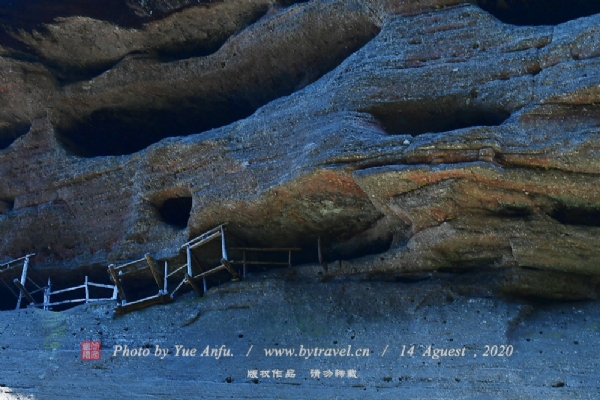
Nanping Wuyishan Yamuqun.
The Rich History of Nanping Wuyishan Yamuqun
Nestled within the breathtaking landscapes of Wuyishan National Scenic Area in Fujian Province, the Nanping Wuyishan Yamuqun, or the Wuyishan Cliff Tombs, stands as a remarkable testament to ancient funerary practices. These ancient tombs date back to the late Xia Dynasty, and their unique structure and burial methods offer a glimpse into the enigmatic culture of the early Minnan people.
The site comprises approximately 20 known locations and around 20 wooden coffins, ingeniously crafted to resemble the traditional Jiangnan fishing boats. Known by various names such as ‘boat coffins’ and ‘suspended coffins,’ these burial vessels were designed with a distinct boat-like shape, with dimensions ranging from 3 to 5 meters. Each coffin is carved from a single piece of hardwood, typically using durable materials like nanmu wood, demonstrating the advanced woodworking skills of the time.
Strategically placed on high cliffs, often within natural caves or crevices, the cliff tombs were designed to be both secure and inaccessible, enhancing their mystique. This method of burial, characterized by the location’s inaccessibility and the coffins’ suspended appearance, has led to the common reference of these sites as “suspended burials.” The coffins are positioned roughly 20 to 50 meters above ground, overlooking the serene valleys below, contributing to the ethereal quality of the landscape.
Archaeological findings from the late 20th century have revealed over 200 cliff tombs in the area, with significant excavations uncovering 37 coffins and a wealth of artifacts dating back more than 2,600 years to the Spring and Autumn period. The discovery of ceramic wares, wooden tools, and bronze items suggests a rich cultural context for the early inhabitants. However, many artifacts have been lost to time or human interference, making ongoing research crucial for understanding the full scope of this ancient civilization.
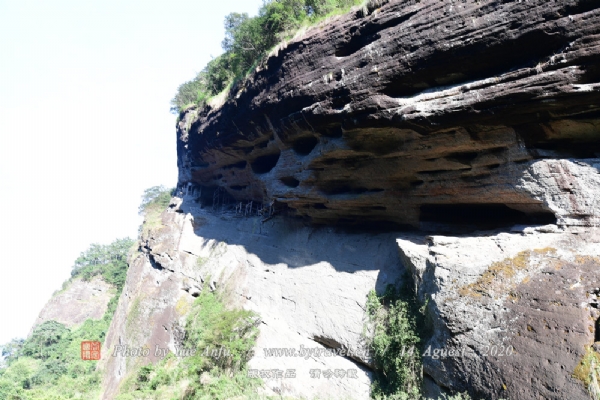
Nanping Wuyishan Yamuqun.
In recognition of its historical significance, the Wuyishan Cliff Tombs were designated as a key national cultural relic protection site by the Chinese government in 2006. This acknowledgment not only underscores the importance of the site in preserving China’s rich heritage but also highlights the ongoing efforts in archaeological research and cultural preservation.
Despite the wealth of knowledge gleaned from these tombs, many questions remain unanswered, particularly regarding the ancient techniques employed to place the coffins in such precarious locations. The ingenuity and craftsmanship required for these burials reflect the profound spiritual beliefs of the ancient Minnan people, who viewed their final resting places as a bridge to the afterlife.
Today, the Wuyishan Cliff Tombs continue to intrigue historians, archaeologists, and visitors alike, serving as a poignant reminder of the region’s ancient past and the enduring mysteries that still await discovery.
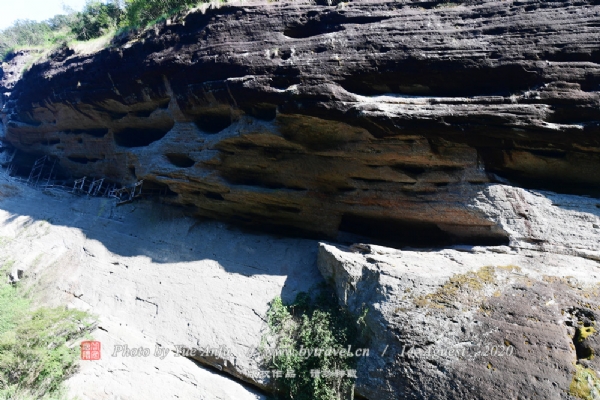
Nanping Wuyishan Yamuqun.
Main Highlights: What to See at Nanping Wuyishan Yamuqun
Nestled within the breathtaking landscapes of the Wuyi Mountains in Fujian Province, the Nanping Wuyishan Yamuqun, or Wuyi Mountain Cliff Tombs, offers a fascinating glimpse into ancient burial practices and the rich cultural heritage of the region. Here are the key highlights that make this site a must-visit for history enthusiasts and adventure seekers alike.
Unique Burial Structures
The Wuyishan Cliff Tombs consist of approximately 20 distinct locations, housing around 20 intricately crafted wooden coffins resembling traditional Jiangnan boats. These coffins, often referred to as “ship coffins,” are designed in a manner that reflects the ancient maritime culture of the Min people. Each coffin is typically between 3 to 5 meters long and showcases an elegant, boat-like form, with a high and wide front tapering toward a narrower, lower back.
Stunning Natural Setting
Perched dramatically on cliff faces and within hidden caves, these tombs are not just burial sites but also marvels of engineering. The ancient inhabitants utilized the region’s natural topography, often placing coffins in hard-to-reach areas, which adds to their mystique. The impressive heights of 20 to 50 meters above the ground create an awe-inspiring backdrop, making these tombs visible yet seemingly unreachable, evoking a sense of the ethereal.

Nanping Wuyishan Yamuqun.
Rich Archaeological Finds
Since the late 20th century, archaeological excavations have revealed over 200 cliff tombs, with 37 coffins unearthed so far. Many artifacts dating back more than 2,600 years from the Spring and Autumn Period and the Warring States Period have been discovered alongside these tombs, including bamboo, ceramics, and bronze items. These findings provide invaluable insights into the customs and daily lives of the ancient Min people.
Cultural Significance
Recognized as a national key cultural relic protection unit in 2006, the Wuyishan Cliff Tombs are considered to be among the earliest known cliff tombs in China. Their unique design and construction methods are a testament to the ingenuity and spiritual beliefs of the ancient inhabitants, who sought to honor their dead in ways that transcended the earthly realm.
Mysteries Yet to Unravel
While much has been uncovered about these tombs, the methods used by ancient peoples to place coffins in such precarious locations remain largely a mystery. This enigmatic aspect adds an additional layer of intrigue for visitors, who are invited to ponder the challenges and beliefs that shaped these extraordinary burial sites.
Nearby Attractions
For those exploring the Wuyishan area, a host of nearby attractions enhances the experience. The scenic Nine Bend Stream, the serene Water Curtain Cave, and the historic Ziyang Academy offer a blend of natural beauty and cultural exploration, ensuring that visitors can immerse themselves fully in the rich tapestry of Wuyi Mountain’s history and landscape.
Visiting the Nanping Wuyishan Yamuqun is not just a journey into an archaeological site; it is an invitation to connect with the ancient past in a setting that is as awe-inspiring as it is educational.

Nanping Wuyishan Yamuqun.
Planning Your Visit: A Practical Guide
Practical Guide: Visiting Nanping Wuyishan Yamuqun (武夷山崖墓群)
Overview
The Nanping Wuyishan Yamuqun, or Wuyi Mountain Cliff Tombs, is a significant archaeological site located within the stunning Wuyi Mountain National Scenic Area in Fujian Province, China. This ancient burial ground features unique wooden coffins resembling traditional Jiangnan fishing boats and offers visitors a glimpse into the burial practices of the ancient Min ethnic group.
Getting There
Location: The Yamuqun is situated along the banks of the Jiuqu Creek and the surrounding peaks in the Wuyi Mountain area. The main sites include notable peaks such as Dawang Peak, Yunu Peak, and Xian Guanyan.
Access:
– By Air: The nearest major airport is in Nanping, which is approximately 10 kilometers away from the Wuyi Mountain area. From the airport, visitors can take a taxi or arrange for a hotel shuttle.
– By Train: Nanping has a railway station with frequent services to major cities. From the station, local buses and taxis are available to reach the scenic area.
– By Bus: Buses from nearby cities like Fuzhou and Xiamen regularly service Wuyi Mountain. The bus ride offers scenic views of the surrounding landscapes.
Best Time to Visit
The ideal time to visit the Wuyishan Yamuqun is during the spring (March to May) and autumn (September to November) months when the weather is mild and the natural scenery is vibrant. Summer can be hot and humid, while winter may bring cooler temperatures.
Visitor Information
Opening Hours: The site is typically open year-round, but specific hours may vary by season. It is advisable to check local listings or inquire at visitor centers for the latest information.
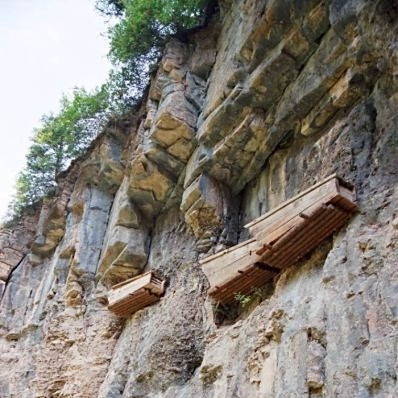
Nanping Wuyishan Yamuqun.
Admission Fees: Entrance fees may be required for the Wuyi Mountain National Scenic Area. Additional fees may apply for guided tours of the Yamuqun. Discounts may be available for students and seniors.
What to See
- The Cliff Tombs: The main attraction consists of nearly 20 cliff tomb locations, with about 20 coffins made of durable woods like nanmu (a type of cedar). These tombs are positioned high on cliff faces, often utilizing natural caves and fissures for burial sites.
- Artifacts and Relics: Although many burial items have deteriorated over time, the site has yielded numerous artifacts dating back over 2,600 years, including pottery, wooden implements, and bronze items.
- Scenic Views: The surrounding landscape is breathtaking, with picturesque views of the mountains and lush valleys. Don’t miss the chance to explore nearby hiking trails and enjoy the natural beauty of Wuyi Mountain.
Tips for Visitors
- Wear Comfortable Shoes: The terrain can be uneven, so sturdy hiking shoes are recommended.
- Stay Hydrated: Bring water, especially if you plan to hike or explore extensively.
- Respect the Site: The Yamuqun is a culturally significant location. Please follow all guidelines and respect the sanctity of the tombs and surrounding areas.
- Guided Tours: Consider hiring a local guide to enhance your understanding of the history and significance of the tombs. Many guides are knowledgeable about both the archaeological aspects and the local culture.
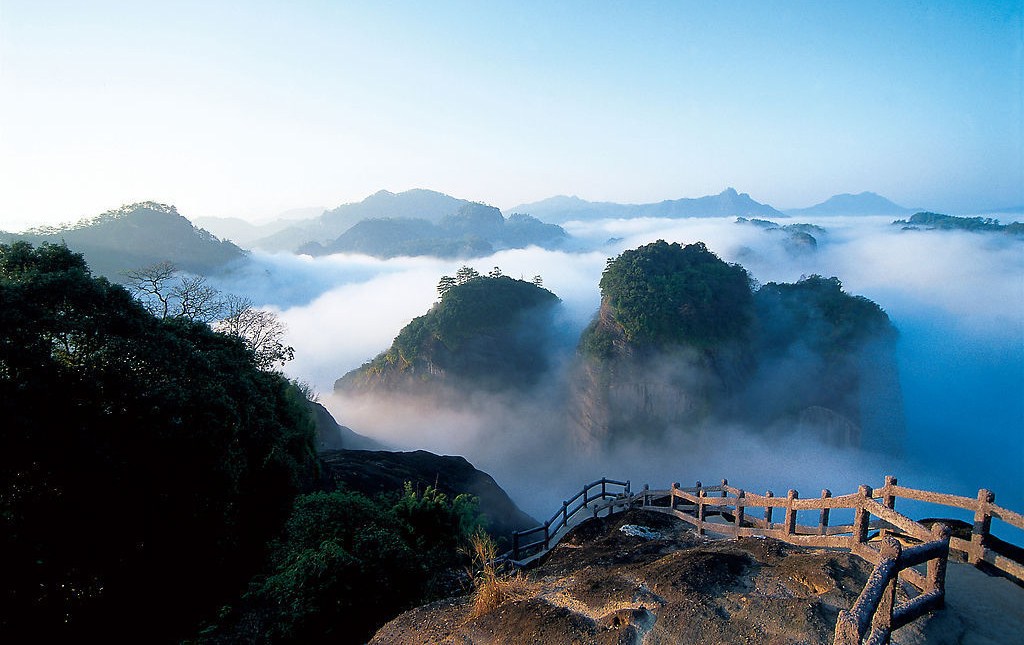
Nanping Wuyishan Yamuqun.
Nearby Attractions
- Wuyi Mountain Scenic Area: Explore other parts of the UNESCO World Heritage site, featuring dramatic cliffs, tea plantations, and the famous Jiuqu River.
- Wuyi Palace: A historical site with beautiful architecture set against the stunning backdrop of the mountains.
- Tea Gardens: Visit local tea farms to learn about the region’s famous Wuyi rock tea and participate in tastings.
Accommodations
There are various accommodation options nearby, ranging from luxury hotels to budget hostels. Many hotels offer views of the mountains and easy access to the scenic area. Booking in advance, especially during peak tourist seasons, is recommended.
Conclusion
Visiting the Nanping Wuyishan Yamuqun offers not just an opportunity to delve into ancient burial practices but also to enjoy one of China’s most beautiful natural landscapes. Plan your trip thoughtfully to make the most of this fascinating cultural and historical site.
Tickets, Hours, and Booking
Visiting the Nanping Wuyishan Yamuqun, or the Wuyishan Cliff Tombs, offers a unique opportunity to explore an ancient burial site steeped in history and mystery. To ensure a seamless experience, planning your visit with the right ticketing information is essential.
Ticket Information
Admission Fees:
– Adults: Approximately 80 CNY (Chinese Yuan), which is about 12 USD.
– Students and Seniors: Reduced rates may apply, typically around 40 CNY (about 6 USD). Valid identification is required to avail of these discounts.
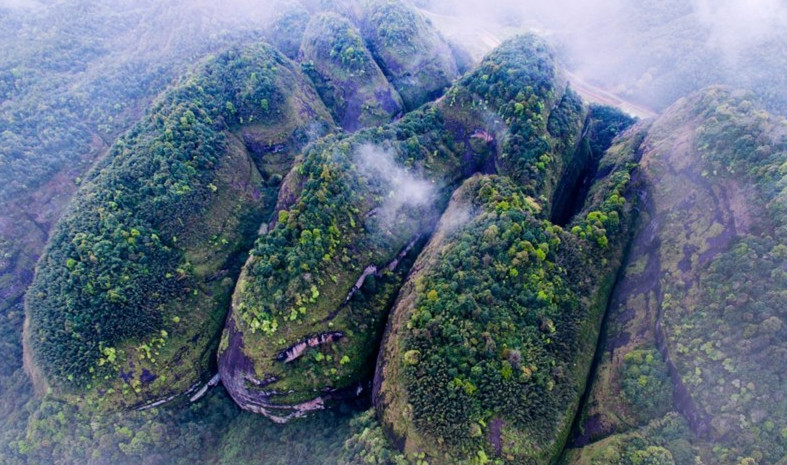
Nanping Wuyishan Yamuqun.
Ticket Purchase:
– Tickets can be purchased at the entrance of the Wuyishan Scenic Area or in advance through various online platforms, including official tourism websites and ticketing apps. It is advisable to book tickets in advance during peak tourist seasons to avoid long queues.
Opening Hours:
– The site is generally open from 8:00 AM to 6:00 PM. However, hours may vary seasonally, so checking in advance is recommended.
Guided Tours:
– For a more enriching experience, consider joining a guided tour. These typically cost an additional 150-200 CNY (around 22-30 USD) and often include transportation, entrance fees, and an expert guide who provides insights into the history and significance of the tombs.
Accessibility:
– The Wuyishan Cliff Tombs are located in a mountainous area, so some sections may require moderate hiking. Ensure to wear comfortable footwear and prepare for variable weather conditions.
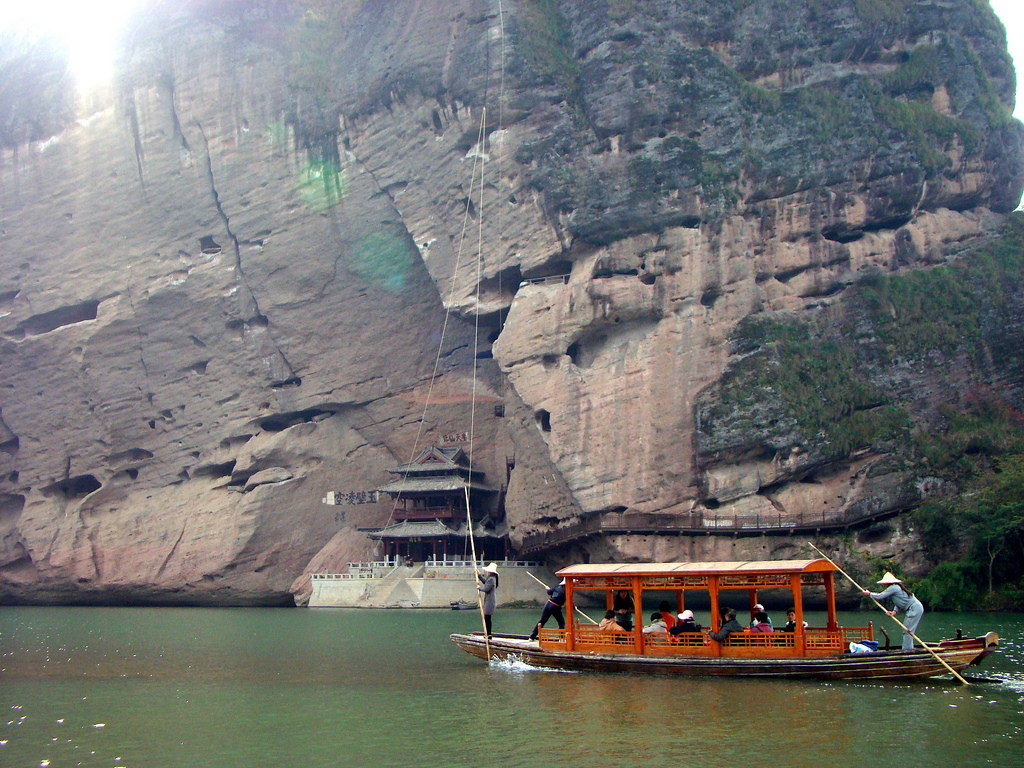
Nanping Wuyishan Yamuqun.
Visiting the Wuyishan Cliff Tombs not only allows you to witness the incredible craftsmanship of ancient burial practices but also offers stunning views of the surrounding landscape. Make sure to plan your trip accordingly to fully appreciate this cultural heritage site.
How to Get There
Getting to and around the Nanping Wuyishan Yamuqun (武夷山崖墓群) is straightforward, thanks to its location within the scenic Wuyishan National Scenic Area in Fujian Province. Here’s a detailed guide to help you navigate your journey to this fascinating historical site.
Accessing Wuyishan Yamuqun
By Air:
The nearest major airport is Wuyishan Airport (WUS), which provides both domestic flights and some international connections. From the airport, you can take a taxi or arrange for a shuttle service to reach the Wuyishan Scenic Area, which is approximately 10 kilometers away.
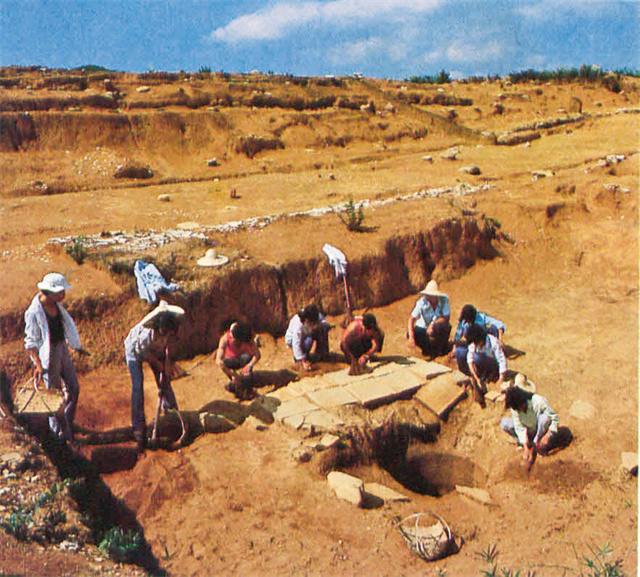
Nanping Wuyishan Yamuqun.
By Train:
Wuyishan also has a railway station that connects to major cities in China, including Fuzhou and Xiamen. Once you arrive at Wuyishan Railway Station, you can take a local taxi or a bus to the scenic area, which is about 5 kilometers away.
By Bus:
Buses frequently run from cities like Nanping, Fuzhou, and Xiamen to Wuyishan. The journey from Nanping takes about 2 hours, while the trip from Fuzhou is around 3 hours. Upon arrival at Wuyishan Bus Station, you can easily find local transport options to the Yamuqun site.
Getting Around the Scenic Area
Exploring the Wuyishan Scenic Area and the Yamuqun itself can be best accomplished using a combination of walking and local transportation.
Walking:
The Yamuqun is located amidst stunning natural scenery, so walking is a great way to appreciate the surroundings. The area is well marked, and trails lead to various viewpoints and historical sites, including the cliffs where the ancient tombs are located.
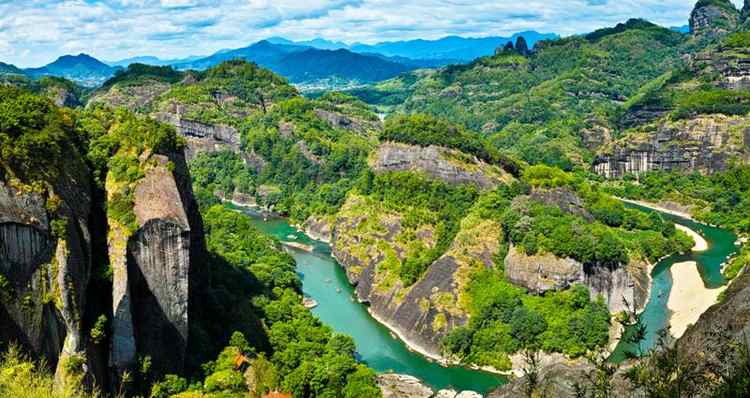
Nanping Wuyishan Yamuqun.
Local Transportation:
There are local buses and taxis available within the Wuyishan Scenic Area. If you prefer a guided experience, consider hiring a local guide or joining a tour group that can provide transportation directly to the Yamuqun and other nearby attractions.
Tips for Travelers
- Plan Ahead: If you intend to visit during peak tourist seasons (spring and autumn), it’s advisable to book your transportation and accommodation in advance.
- Bring Comfortable Footwear: The terrain can be rugged, so wear sturdy shoes suitable for hiking and walking.
- Stay Hydrated: Carry water with you, especially during warmer months, as you may spend several hours exploring the area.
- Respect Cultural Sites: As a site of significant historical value, be mindful of the local customs and regulations while visiting the Yamuqun.
By following these tips and utilizing the transportation options available, you’ll be well-prepared to explore the ancient and mysterious Wuyishan Yamuqun. Enjoy your journey into the rich history and stunning landscapes of this UNESCO World Heritage site!
Local Cuisine and Accommodation
When visiting the stunning Nanping Wuyishan Yamuqun (武夷山崖墓群), it’s essential to immerse yourself in the local flavors and find comfortable lodgings to enhance your experience. Here’s a guide to the best food and accommodation options in this culturally rich area.
Culinary Delights
- Local Specialties
The region boasts a variety of unique dishes that reflect its rich agricultural heritage. Don’t miss out on trying: - Wuyishan Tea: Known for its unique flavor, this tea is locally sourced and often served in traditional tea houses. A tasting session can be a relaxing way to unwind after a day of exploration.
- Bamboo Shoots: Freshly harvested bamboo shoots, often stir-fried or braised, are a local delicacy that showcases the region’s produce.
- Peaceful Tofu (和平豆腐): A traditional dish known for its smooth texture, usually served with a flavorful sauce.
-
Yongfeng Casserole Fish (永丰焖鱼): A delicious fish dish cooked with local herbs and spices, perfect for those looking to enjoy authentic flavors.
-
Dining Venues
- Local Restaurants: Many small eateries dotted around the area offer hearty meals at reasonable prices. Look for places with crowds, as this often indicates good food.
- Tea Houses: Experience a traditional tea ceremony at one of the many tea houses around Wuyishan. Enjoy a light meal alongside tastings of the best local teas.
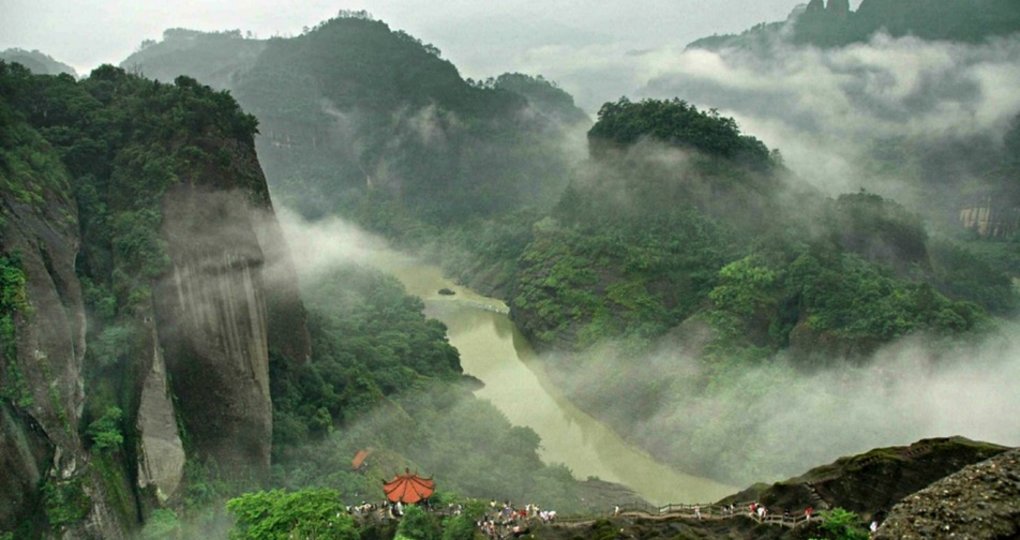
Nanping Wuyishan Yamuqun.
Where to Stay
- Boutique Hotels
- Wuyishan International Hotel: A great blend of comfort and modern amenities, this hotel offers stunning views of the surrounding mountains and is conveniently located near the scenic spots.
-
Wuyishan Tea Garden Resort: A unique accommodation option that allows guests to stay amidst lush tea gardens, offering a tranquil atmosphere and easy access to tea-picking experiences.
-
Guesthouses and Homestays
- Local Homestays: For a more personal experience, consider staying at a local homestay. Many families offer rooms that provide a genuine feel of the local culture and cuisine.
-
Green Forest Guesthouse: A cozy guesthouse situated near popular hiking trails, perfect for adventurers looking to explore the natural beauty of the area.
-
Eco-Friendly Options
- Wuyishan Eco Lodge: Ideal for nature lovers, this lodge emphasizes sustainability and provides a peaceful retreat with comfortable accommodations amidst nature.
Tips for a Memorable Stay
- Book in Advance: During peak seasons, accommodations can fill up quickly, so it’s advisable to secure your stay ahead of time.
- Engage with Locals: Don’t hesitate to ask local residents for their recommendations on food and places to stay; they often know the best hidden gems.
Exploring the archaeological wonders of the Wuyishan Yamuqun is an unforgettable experience, and indulging in the local cuisine paired with comfortable lodging will surely enhance your adventure in this remarkable region.
Frequently Asked Questions
Frequently Asked Questions about Nanping Wuyishan Yamuqun (武夷山崖墓群)
1. Where is the Wuyishan Yamuqun located?
The Wuyishan Yamuqun is situated within the Wuyishan National Scenic Area in Fujian Province, China. It can be found along the peaks bordering the Jiuqu Creek and in various scenic spots in the northern area of Wuyishan.
2. What is the historical significance of the Wuyishan Yamuqun?
This site is notable for its ancient cliff tombs, which are believed to date back to the Bronze Age, making them some of the earliest known burial sites in China. Over 200 cliff tombs have been discovered here, with archaeological findings revealing a wealth of artifacts from the Spring and Autumn period, approximately 2,600 years ago.
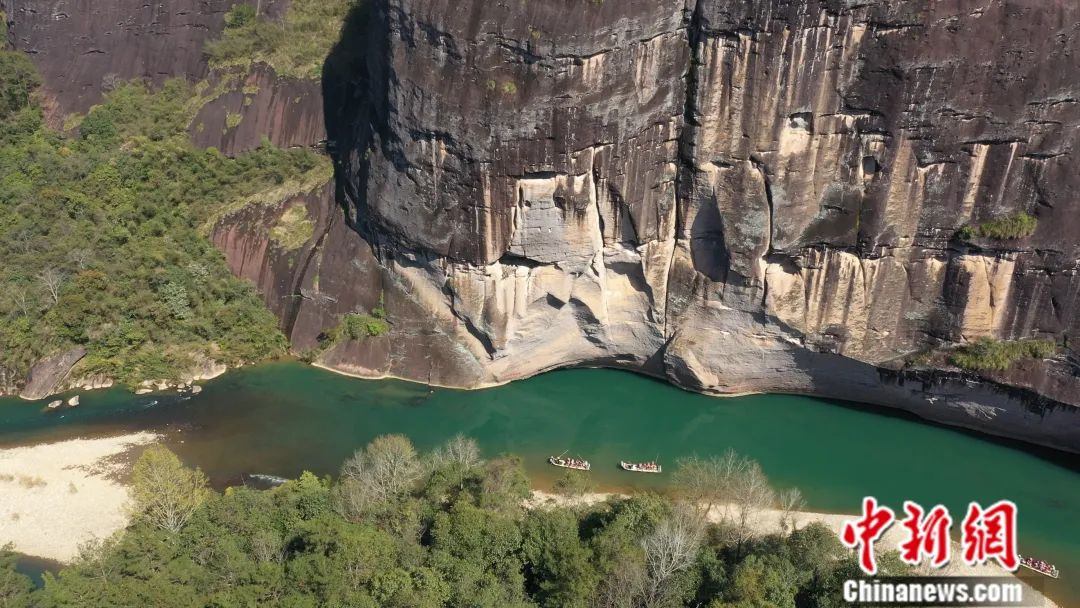
Nanping Wuyishan Yamuqun.
3. What are the unique features of the tombs?
The tombs are characterized by wooden coffins shaped like traditional Jiangnan boats, known for their distinct design with high, wide fronts and pointed ends. These coffins, often made from durable woods like nanmu, are typically placed in hard-to-reach cliff crevices or natural cavities, giving them an ethereal appearance.
4. How many tombs and coffins are currently visible at the site?
There are approximately 20 identified tomb locations, containing around 20 coffins. The exact number can vary as some coffins may not be fully visible or may be concealed within rock fissures.
5. Are there any artifacts found with the coffins?
Yes, burial items such as bamboo artifacts, ceramics, and bronze objects have been discovered alongside the coffins. However, many of these items are difficult to locate due to their age and historical damage.
6. How can visitors access the Wuyishan Yamuqun?
Visitors can access the Wuyishan Yamuqun through well-marked trails within the Wuyishan National Scenic Area. It is recommended to join guided tours for the best experience and to ensure safety while exploring the rugged terrain.

Nanping Wuyishan Yamuqun.
7. What precautions should visitors take when visiting the site?
Due to the location of the tombs on cliffs and in steep areas, visitors should wear appropriate footwear, stay on designated paths, and be cautious of their surroundings. It is advisable to check weather conditions before visiting, as rain can make trails slippery.
8. Are there any other attractions near the Wuyishan Yamuqun?
Yes, the area is rich in natural beauty and historical sites. Nearby attractions include the Wuyishan Scenic Area itself, famous for its stunning landscapes, tea gardens, and additional cultural heritage sites like the Wuyishan Water Curtain Cave and various temples.
Final Thoughts on Your Trip
Visiting the Nanping Wuyishan Yamuqun offers a unique glimpse into ancient burial practices that blend cultural heritage with breathtaking natural beauty. As you explore the rugged cliffs and hidden caves, you’ll find yourself enveloped in a sense of wonder about the lives of the ancient Min people who once thrived in this region. The intricately designed boat-shaped coffins, suspended high above the ground, tell stories of a people who honored their deceased in extraordinary ways, leaving behind a legacy that continues to intrigue scholars and adventurers alike.
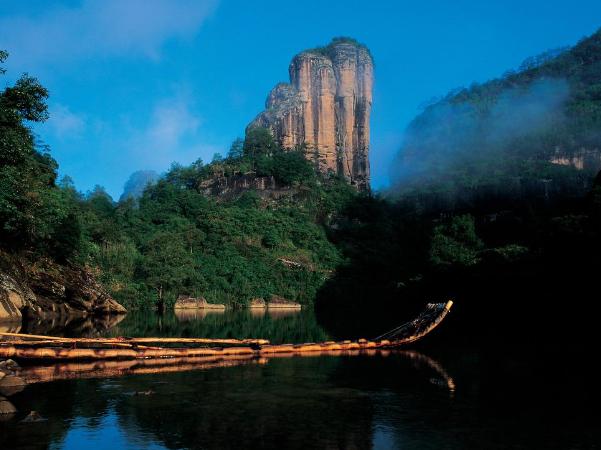
Nanping Wuyishan Yamuqun.
Whether you are a history enthusiast, a nature lover, or simply seeking a tranquil escape, the Yamuqun promises a memorable experience. As you stand before these magnificent cliffs, take a moment to reflect on the mysteries they hold and the generations that have come before you. The allure of Wuyishan’s Yamuqun is not just in its historical significance, but in the invitation it extends to all visitors to connect with the past while surrounded by the stunning landscapes of Fujian Province. Embrace the adventure, and let the magic of Wuyishan inspire your journey!
